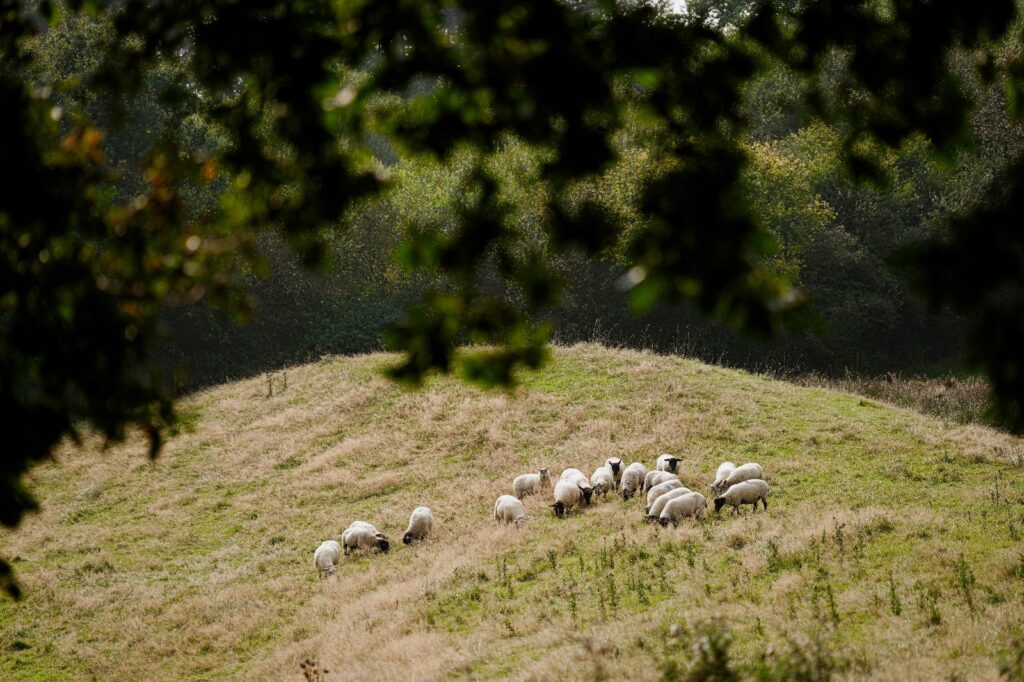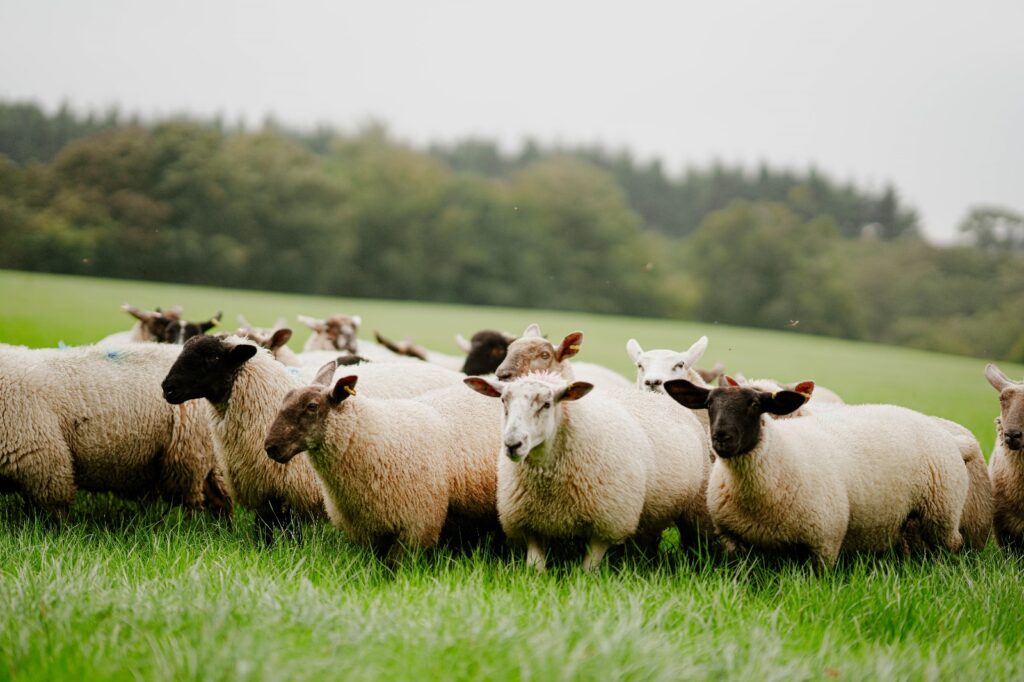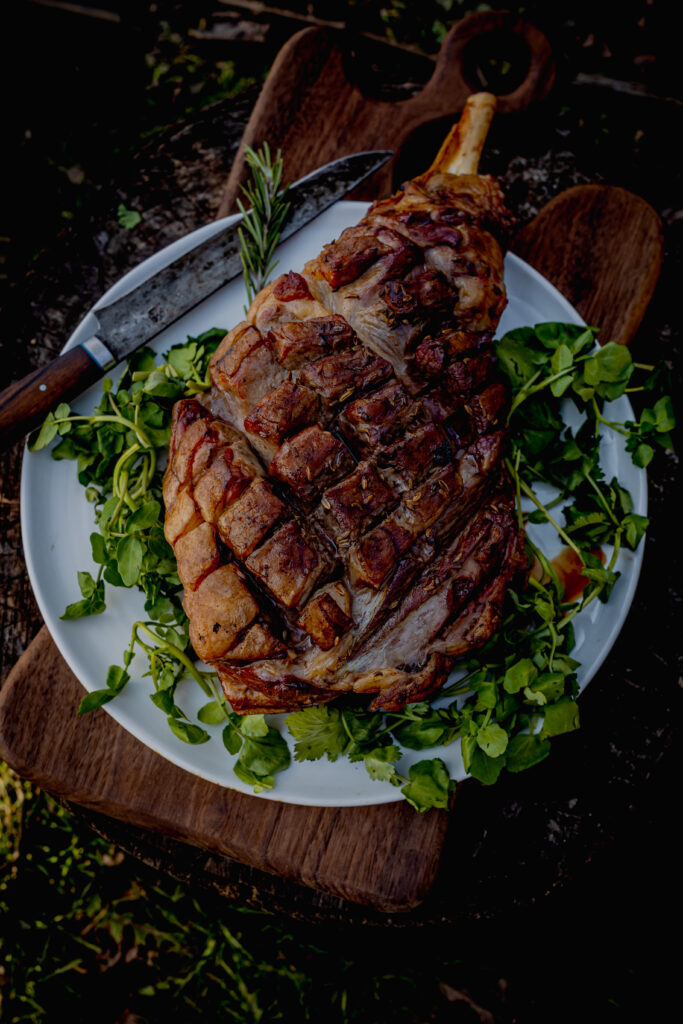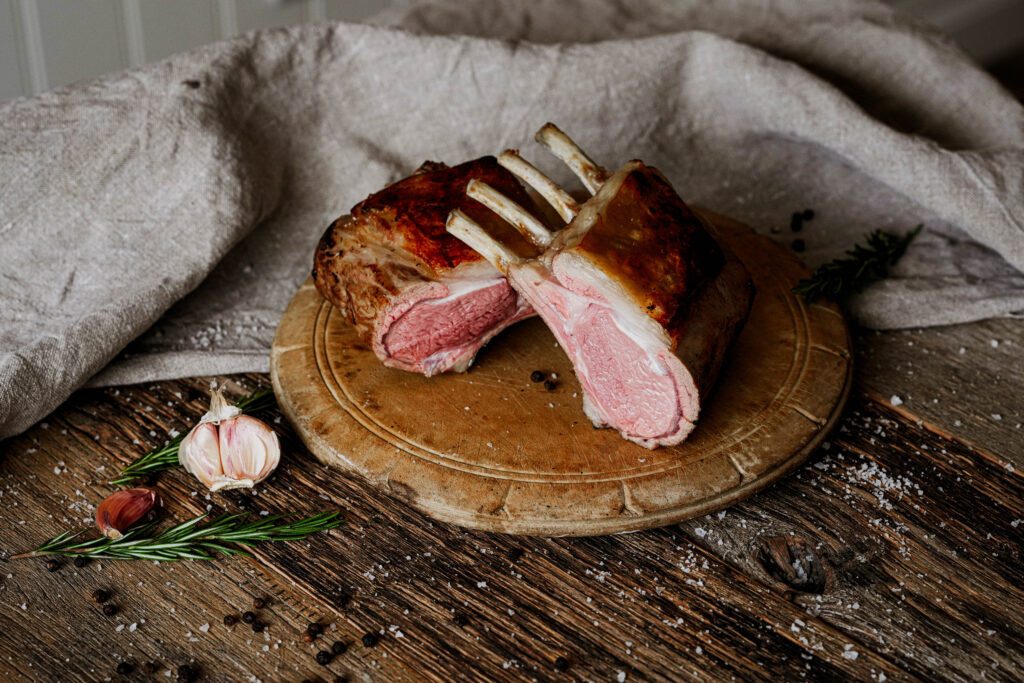Written in collaboration with Beacon Farms
Roast lamb with mint sauce and seasonal vegetables remains an Easter classic. Sales are expected to soar this Easter especially, because falling a little later in the year, on April 20, means there are high hopes for a sunny day, which pairs beautifully with a lighter roast.
But, for the best quality roast, Spring Lamb shouldn’t be what you’re looking for. ‘Spring Lamb’ is a term often used for younger lambs aged between three to six months. It might sound seasonal and delicious, but the reality is the lamb was probably born indoors and is likely to have been fed a high-protein diet as well as supplements to accelerate growth to get it table-ready. This changes the texture and cooking quality; lamb shouldn’t be super lean.
An ‘Old-Season Lamb’ or ‘Hogget’, born the year before, is still young, but has had ample time to live outdoors, graze freely and mature naturally.
“This slower growth process allows them to develop a richer, more complex flavour and a firmer texture – qualities young lambs simply can’t achieve,” says James Vining of Beacon Farms.
“Ewes naturally lamb in the spring time in the sunshine. However, for spring lambs to be fat at Easter, they are put to the ram earlier, and often lambed inside in bad weather. Either that, or they’re imported from Australia and New Zealand. The scale of these farms are usually huge and, I believe, the quality of the lamb just isn’t the same, especially after it has travelled that far – not to mention the food miles.”

Sustainable and ethical sheep farming
As far as farmed animals are concerned, British sheep arguably receive one of the best deals.
Sheep fatten up nicely by simply foraging in fields. They can also graze on land that doesn’t have much other agricultural use – such as poor quality hillsides. This means it makes economic sense to allow them to roam free and not industrially-farm them in sheds or feed them high-protein diets (unless you’re rushing to fatten them up for Easter). At Beacon Farms, their sheep also graze cover crops as a part of a regenerative cereal production system. “This enhances soil health, captures carbon naturally and prevents soil erosion and pollution of our watercourses,” explains James.
There are welfare issues to be aware of when it comes to sheep farming. Castration, tail-docking and transportation are the most debated ones. As in every profession, some farms are better than others. This is why it’s important to be confident that you’re buying from someone who has good husbandry skills and who respects that each animal is a sentient being and is treated that way.
It’s also worth checking, whenever possible, that the lamb you’re buying was stunned before slaughter. Compassion in World Farming calculates that a staggering 3.5 million sheep and goats are subject to non-stunned slaughter in the UK annually, based on Food Standard Agency figures.
At its best, sheep farming is a key component of sustainable farming systems. James explains: “By allowing the lambs to graze freely, we’re not just enhancing the flavour and welfare of the animals, we’re also nurturing the land and supporting a more regenerative farming method that’s better for the environment.”

The difference between Spring Lamb and Old-Season Lamb
Understandably, many of us are not very knowledgeable about sheep farming. But we’re not particularly clued-up when it comes to meat selection, either.
We don’t think to ask the age of the lamb we’re buying, but age makes a real difference to the life the sheep has lived and also to flavour.
James argues if we buy lamb that’s too young it means we’re missing out on a slightly richer grain and deeper flavour. He says:
“Born the previous Spring, our Old-Season Lamb, or Hoggets, graze freely on lush pastures of our farm in the Blackdown Hills of Devon, thriving on a natural, grass-based diet. This slower growth process allows them to develop flavours that are more satisfying and keeps the meat tender.”
From Pasture to Plate
When it comes to choosing cuts of lamb, most British shoppers only really buy the chops or leg of lamb. Plus, we tend to like our lamb chops chunky. So, a lot of our Welsh lamb – which is traditionally smaller – get sent to Spain. Less popular cuts, such as brisket, mince or shoulders, are also exported to Europe where there is more appreciation for them.
Naturally for Easter, lamb legs and shoulders are in high demand for Sunday roasts, and as a consequence prices can soar. Shanks, racks, and chops can be less expensive options and still offer excellent quality and taste when sourced well.
At Beacon Farms they hand-select the Hoggets, dry-age them for seven days to allow the natural enzymes to break down the muscle tissue and the flavour to fully develop, and expertly butcher them at their family-run butchers which is just nine miles down the road.
James advises: “You’re looking for meat that has a fairly deep red colouring with slightly yellow fat. The deep red indicates freshness, while fat with a slight yellow tinge is a good sign that the lamb was grass-fed and will have a richer flavour. Avoid pale pink meat, as it’s likely too young to have developed any real flavour.”
You can serve lamb well done, but the key is to try not to overcook it because you want to make sure you keep its naturally rich, slightly sweet, and grassy flavours – and keep the meat tender. Resting the meat will help with this, as it helps it to relax and the juices to redistribute evenly.
When you shop at Beacon Farms, you’re supporting British farming practices that prioritise animal welfare, sustainability, and the environment. They offer next-day delivery nationwide, if you order by 1pm. Last orders for Easter Hogget is Wednesday 16 April, by 1pm.
Use code ‘LIVEFRANKLY’ for for 10% off or follow this link for it to be automatically applied.
Main image: Beacon Farms grass-fed lamb shoulder, boned and rolled





